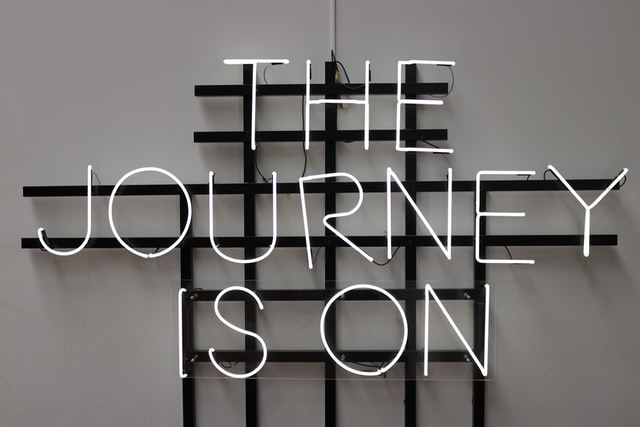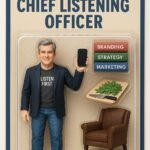In marketing, reaching your customers at every stage of the customer journey helps you convert leads into sales. Unfortunately, many marketers get tunnel vision and fail to implement comprehensive strategies that touch on the essential aspects of the customer journey.
The customer journey is made up of four main stages. From initial consideration, evaluation, purchase to the post-purchase period, each of these stages is essential for creating an experience customers want to come back to. Improve your marketing by exploring these stages and the strategies for maximizing the potential of each.
1. Consideration
The initial consideration stage is where audiences find your business and learn the products and services you offer. Consideration is the stage where many marketers get stuck, forgetting that more than name recognition matters in creating a successful brand. Instead, you’ll need to pull out all the stops to cultivate an excellent first impression.
Marketing in the consideration stage requires a look into all your platforms. Web and software developers will be instrumental in producing the experiences shoppers want on the internet and through digital applications, streamlining functionality with usability. From there, it’s a matter of applying effective use of paid advertising honed to a target audience.
Here are some marketing strategies worth trying at the consideration stage:
- Informative content marketing like simply answering the questions you frequently receive.
- Customer profile and behavior analytics. Do you know where your traffic comes from and who converts?
- Search engine optimization (SEO) – and how understanding that most consumers search through asking a question.
- Omni-channel and multimedia content. This matters because different channels require different messaging.
2. Evaluation
Next comes the evaluation stage. Evaluation is the customer journey stage in which buyers will weigh their options, compare products, and ask themselves why your business might be the right choice. Winning this stage is essential for cultivating success.
Fortunately, effective marketing at this stage can be as simple as offering an accessible, sustainable user experience. Quality is vital, but you’ll also need to prove to customers that you have the expertise and reliability they want from a company. During the evaluation, phase is where brand signals and identity come more into play.
Here are just a few examples of strategies you might use during the evaluation stage of the customer journey:
- Informative email marketing
- Calls to action
- Keyword campaigns
- Customer testimonials and reviews
3. Purchase
At the purchase stage, your prospective customers go from prospects to converts. They make that actual purchase, and you gain sales revenue. However, if you haven’t optimized and aligned your marketing with exceeding expectations at this stage, your overall conversion rates will suffer.
Customers want an efficient and high-quality experience. The quicker you can deliver on that experience, the better. Improving productivity through a well-structured, well-rewarded workplace can be a marketing strategy in itself, drawing in customers through referrals and reputation. From here, it’s just a matter of offering the flexibility and convenience customers want from purchase methods and options.
Here are a few of the strategies you might try during the purchasing stage:
- Clear fee structures
- Quick checkout
- Fast, free, or discounted delivery
- Referral incentives
4. Post-Purchase
Finally, we come to the post-purchase stage. At this point in the customer journey, the consumer has already made a purchase. The post-purchase phase doesn’t mean your marketing efforts are over. Instead, you need to take the following steps in developing ongoing relationships with your customers to encourage repeat business. The post-purchase stage of the journey helps you retain clients and build longer lifetime value. Most marketers don’t pay enough attention to this phase.
Optimize your online store, analyze customer data, collect and use feedback, and more for a successful post-purchase approach. Make your customers feel as though you care and leave them with a reason to return.
These are just a sampling of the strategies available to you at this stage:
- Thank you for messages, discounts, or gifts
- Customer-centered return and refund policies
- Satisfaction surveys
- Loyalty rewards
By applying practical marketing strategies like these at every stage of the customer journey, you can improve your ability to generate leads, close sales, and retain customers throughout the life of your company. All it takes is a comprehensive view of your customers and what they need. From there, you can genuinely cultivate value through the four primary stages of any purchase and build the business of your dreams.
This is a guest post by Amanda Winstead, a Zillenial who can’t be reached via cable ads. Amanda is a writer focusing on many topics including technology and digital marketing. Along with writing she enjoys traveling, reading, working out, and going to concerts. If you want to follow her writing journey, or even just say hi you can find her on Twitter.
You can set up a time to chat with me about your marketing challenges using my calendar. Email me jeffslater@themarketingsage.com Call me. 919 720 0995. The conversation is free, and we can explore if working together makes sense. Watch a short video about working with me.
Photo by Clemens van Lay on Unsplash






